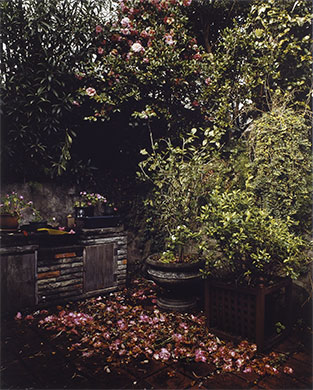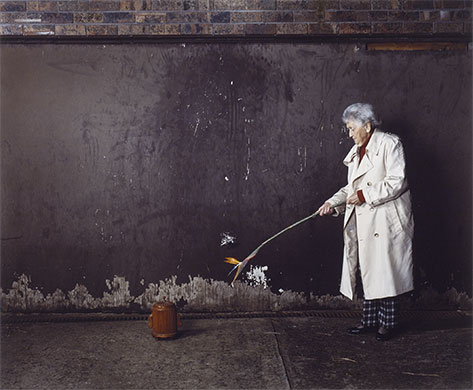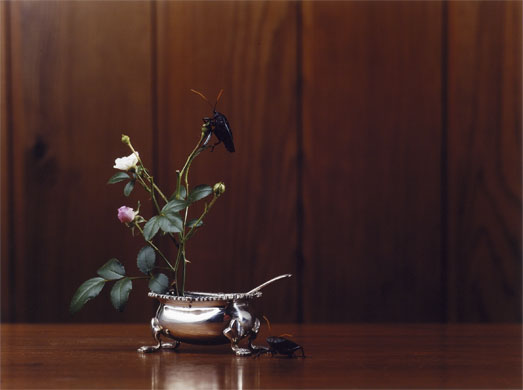Petalody
2 July 2021

The camellia blossom plummets to earth.
No longer supported by life, it falls swiftly and without ceremony. It lands with a barely audible plop, cushioned by the profusion of petals already lying on the moist grass beneath the tree. In the disappearing light of late afternoon the accumulation of scarlet petals blaze accusingly. They blush – as if surprised by their impermanence.
Accompanying the deepening shadows, a coolness creeps into the garden, and yet still the petals seem to resist the coldness of death. Mutely defiant, the flowers’ vivid hues continue to throb, emitting a rich warmth—even as the darkness envelops them.
Twilight brings its own soggy smell of decay.
Another flower drops.
The samurai estates of feudal Japan always featured camellias in a garden. It was thought that the blossoms’ sudden and dramatic plunge from the branch resembled the way a human head falls— freshly decapitated by enemy sword. The inclusion of camellias served as a beautiful reminder to warriors of the precarious nature of life and the ever-present likelihood of death.
Gardens are full of metaphors. And, if correctly observed, full of wisdom, too.
Gardeners suffer the misfortune of being regarded as fairly simple types. Hands full of worms and dung, they seem easily amused by the oddest things; the presence of insects under rocks, the arrival of rain, or the raking of leaves. But gardeners are in fact, very fortunate people. They have the opportunity to gain great wisdom about life from their interaction with the earth. Gardeners observe and participate in the cycles of nature and, in doing so, learn to decipher the subtle meaning of nature’s language.
The knowing gardener feels none of the camellia’s outrage about its demise. They see no need for differentiating between the stages of growth and decay; these are a continual part of one process. The fallen blossoms return to the earth from which they grew and will nourish the flowers of next year.
To a wise gardener, compost is more beautiful than a flower. It is both the result of past efforts and the cause of future growth.

Mother Nature steps into her garden. She is not young. She wears a trench coat and sensible shoes.
Mother Nature? The story books picture her as a blossoming hot-blooded creature—her buxom bounty overflowing. She is all sunshine and smugness. Her body reeks of fecundity. But surely, this is not the real Mother Nature. If anything, she would certainly be a Grand-Mother. Her age is her asset; the accumulation of knowledge and experience.
Would it really be possible that someone younger could master all the miracles of nature? Learn all the mysteries of life; and do it so quickly? How could a youthful woman clearly comprehend the cycle of nature; without having yet even glimpsed the beginning of the end? Before getting so much as a wrinkle, a crick in the back, or a hair turning grey?
No. Grand-Mother Nature has little need for silken scarves, smiles or conch shells. She goes about her business without caprice, in the methodical and determined manner that only those past the age of distractions can achieve. With full knowledge of life’s pain and joy she remains perfectly composed. Her poised bearing betrays no hint of frailty. She has work to do.
She holds a single strelitzia stem in her hands, wielding it like a magic wand. Her face resolute, she points the flower at a wooden urn. Not even death is immune to her powers. Especially not death. In her wisdom, she perceives death as an inherent necessity. In her hands death becomes the means for growth.
What does time matter to Grand-Mother Nature? A year, a day, an instant? It is all the same to her. She puts away her wand. The flowers will grow as she intends, and so they do.

Grand-Mother Nature strolls about her garden. She nourishes all, and causes everything to flourish. Wherever she walks, plants sprout up, leaves unfurl, buds appear, blossoms swell and gently open. With each careful step a flower blooms between her toes.
No place remains untouched. She reaches everywhere. Even when standing still, her work continues its effortless expansion. She merely has to imagine it and flowers burst into life around her.
Even her thoughts have petals. Her memories, too.
Memories are like seeds that, once planted, continue to blossom unbidden for years afterwards. Fragments of conversations, long forgotten, bloom in her mind: “You hear things about kids”, “A woollen gold-digger”, “A touch of diarrhoea”. The banal detritus of the world – it’s insidious how these things buzz around the brain. “Machine guns are simplicity itself”. Ridiculous, all this wasted energy. This unnecessary destruction intruding, when there is creating to be done.

She prunes her thoughts. The munificence of the garden is too much some days. Mentally she composes a single flower; an arrangement. A human habit. A necessity, perhaps. Snipped and brought in, removed from the overwhelming distractions of outside, the cut flower becomes an easier object of contemplation. A solitary flower in a vase is the lesson of the garden expressed in the singular. A poetic reduction that magnifies awareness on a miniature scale. A human scale; contained.
What man-made vessel can compare with that of the earth? A vase? A bowling bowl? Compared to nature’s creations, the inventions of humans will always seem impoverished. A silver dish or a beer can? No. A set of false teeth? Oddly appropriate, perhaps, but, no. They cannot possibly compete. Their wretchedness only serves to increase nature’s perfection, amplify its beauty.
The rising moon releases Grand-Mother Nature from her mundane thoughts. The petals drop and scatter. Quietly, she moves on.

Night-time bestows its melancholic illumination. In the moonlit garden a hydrangea is in bloom. Its profuse collection of petals creates a minor spectacle of transformation. The blossoms change before our very eyes, from a green-tinged cream, to a delicate powdery blue. Next, they become an intense azure that almost pulsates with iridescence, before darkening to a deep purple – the very colour of bruised blood.
Grand-Mother Nature’s feet tread across the cold damp grass. Another memory blossoms in her mind. Long ago, a boy—her grandson—in the garden, kneeling at her feet.
He asks: “Grandma, why do you have blue feet and I don’t?” She replies, gently, “Because I am old and you are not.”
Unseen in the darkness, another camellia silently descends to the earth.
This is an edited version of the catalogue essay I wrote for my artist friend, Alex Kershaw in 2006. It was one of the first times I put Buddhist spiritual concepts into my creative work.
Images from the Petalody series by Alex Kershaw.
-
Alex Kershaw, He would bash his head against the pavement #2 (2006) 82 x 65 cm, C - Type print on aluminium.
-
Alex Kershaw, Kill them with kindness (2006) 65 x 82 cm, C - Type print on aluminium.
-
Alex Kershaw, Machine guns are simplicity itself (2006) 50 x 66 cm, C - Type print on aluminium.
-
Alex Kershaw, Sleeping and waking are not what they used to be (2006) 50 x 67 cm, C - Type print on aluminium.
-
Alex Kershaw, You would not have any feelings at all if you didn’t feel something (2006) 50 x 80 cm, C - Type print on aluminium.
See more artworks on Alex Kershaw’s website